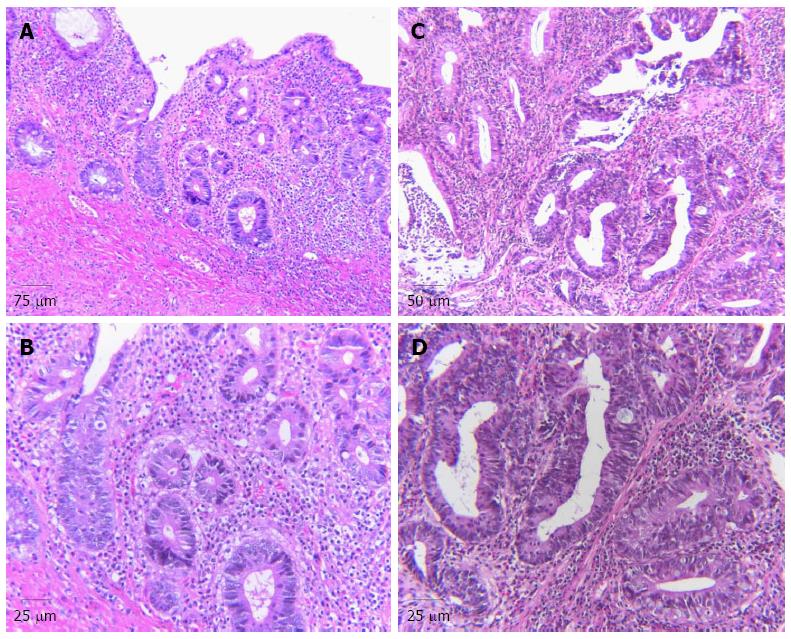Copyright
©2014 Baishideng Publishing Group Co.
World J Gastroenterol. Mar 28, 2014; 20(12): 3164-3172
Published online Mar 28, 2014. doi: 10.3748/wjg.v20.i12.3164
Published online Mar 28, 2014. doi: 10.3748/wjg.v20.i12.3164
Figure 1 Microscopic features of dysplasia in ulcerative colitis.
A: A minor degree of architectural aberration may occur in low-grade dysplasia (HE stain, × 100); B: Low-grade dysplasia is characterized by epithelium that contains cells with significant nuclear hyperchromaticity, enlargement, and elongation. The cytoplasm is mucin depleted, and, as a result, is hypereosinophilic (HE stain, × 200); C: The degree of architectural aberration is more prominent in high-grade dysplasia. Architectural aberrations, such as a complex crypt branching, or a back-to-back growth pattern that is characterized by dysplastic crypts that show little or no intervening lamina propria, also may be present (HE stain, × 400); D: Full-thickness nuclear stratification, significant loss of cell polarity, nuclear pleomorphism are characteristic features of high-grade dysplasia (HE stain, × 400).
- Citation: Bressenot A, Cahn V, Danese S, Peyrin-Biroulet L. Microscopic features of colorectal neoplasia in inflammatory bowel diseases. World J Gastroenterol 2014; 20(12): 3164-3172
- URL: https://www.wjgnet.com/1007-9327/full/v20/i12/3164.htm
- DOI: https://dx.doi.org/10.3748/wjg.v20.i12.3164









